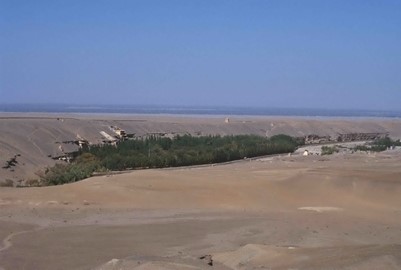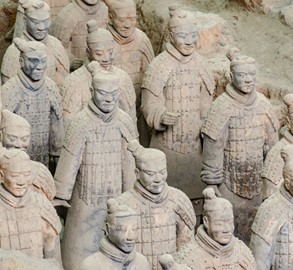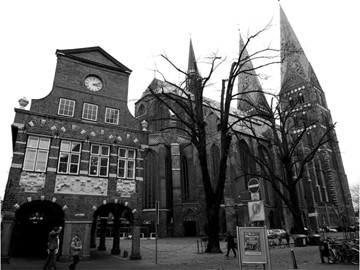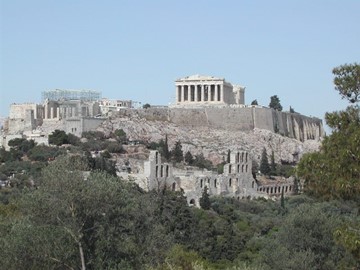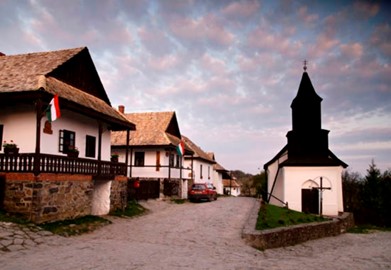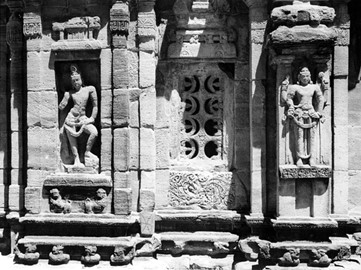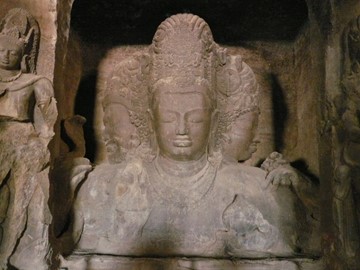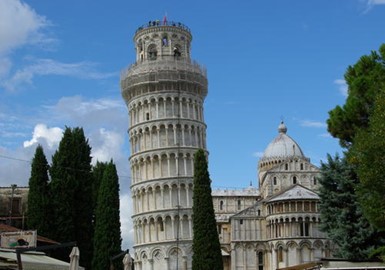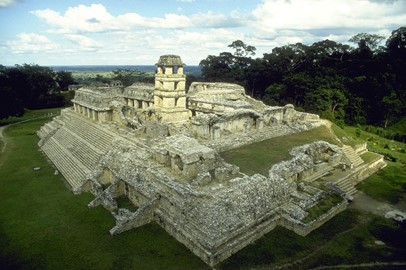search
Mogao Caves
The Mogao Caves, a UNESCO World Heritage site in China, are a network of 492 Buddhist cave temples carved into a desert cliff from the 4th to 14th centuries. Adorned with vibrant murals and intricate statues, they represent a millennium of art, religion, and cultural exchange along the Silk Road. Recognized for their historical and artistic value, they stand as a treasure of ancient Buddhist heritage.
Mausoleum of the First Qin Emperor
The Mausoleum of the First Qin Emperor, a UNESCO World Heritage site in China, is a vast 3rd-century BCE burial complex famed for its Terracotta Army. This underground marvel, with thousands of life-sized clay soldiers, horses, and chariots, reflects the emperor’s quest for immortality and ancient Chinese craftsmanship. Recognized for its historical and archaeological significance, it stands as a monumental testament to imperial ambition.
Peking Man
Peking Man, a UNESCO World Heritage site in China, is an archaeological site preserving fossils of Homo erectus from 700,000 to 200,000 years ago. Discovered in a cave system, these remains, alongside stone tools and evidence of fire use, offer crucial insights into early human evolution in East Asia. Recognized for its scientific significance, it stands as a key record of prehistoric life.
Lubeck
The Hanseatic City of Lübeck, a UNESCO World Heritage site in Germany, is renowned for its well-preserved medieval architecture and historical significance as a key trading hub of the Hanseatic League. Founded in the 12th century, it boasts landmarks like the iconic Holstentor gate, the stunning Lübeck Cathedral, and the charming old town with its brick Gothic buildings. Its cultural and architectural legacy reflects its past prominence as a center of maritime commerce in Northern Europe. Today, Lübeck rema... Read More
Delphi
Delphi, a UNESCO World Heritage site in Greece, is an ancient archaeological treasure renowned for its historical and cultural significance. Once a major religious sanctuary, it housed the famous Oracle of Delphi, where priestesses delivered prophetic messages from the god Apollo. The site features well-preserved ruins, including the Temple of Apollo, an ancient theater, and a stadium, reflecting its past as a center for worship and athletic events. Its stunning natural setting enhances its allure, making i... Read More
Acropolis
The Acropolis, a UNESCO World Heritage site in Greece, is an ancient citadel perched atop a rocky hill, renowned for its historical and architectural significance. Constructed primarily in the 5th century BCE, it houses iconic structures like the Parthenon, a temple dedicated to Athena, showcasing classical Greek art and engineering. The site served as a political and religious center in antiquity, reflecting the power and culture of ancient Athens. Today, it stands as a global symbol of democracy and Weste... Read More
Budapest
Budapest, a UNESCO World Heritage site in Hungary, is renowned for its stunning architecture, rich history, and vibrant culture. The city seamlessly blends the historic charm of Buda, with its medieval castle and cobblestone streets, and the bustling energy of Pest, home to grand boulevards and the iconic Parliament building. Highlights include the thermal baths, a legacy of Roman and Ottoman influences, and the picturesque Danube River, spanned by elegant bridges like the Chain Bridge. Budapest offers a ca... Read More
Hollóko
Hollókő, a UNESCO World Heritage site in Hungary, is a well-preserved traditional village showcasing the country’s rural life and architecture. Known for its unique Palóc culture, the village features 17th- and 18th-century houses with whitewashed walls and wooden porches, reflecting historical building techniques. Its cobblestone streets and vibrant folk traditions, including annual festivals, draw visitors seeking an authentic glimpse into Hungary’s past. The site’s designation highlights its global cultu... Read More
Pattadakal
Pattadakal, a UNESCO World Heritage site in India, is renowned for its exquisite group of 8th-century monuments showcasing a fusion of North and South Indian architectural styles. This historic complex, built during the Chalukya dynasty, features intricately carved temples and shrines, with the Virupaksha Temple as its centerpiece, reflecting the era's religious harmony and artistic mastery. The site serves as a testament to India's rich cultural heritage and ancient craftsmanship.
Elephanta Caves
The Elephanta Caves, a UNESCO World Heritage site in India, are a remarkable collection of rock-cut temples dating back to the 5th to 8th centuries. These ancient caves, primarily dedicated to Lord Shiva, showcase intricate carvings, sculptures, and architectural brilliance, reflecting the rich cultural and religious heritage of the period. The site is a testament to India's historical artistry and spiritual traditions, attracting visitors and scholars worldwide.
Chola Temples
The Chola Temples, recognized as a UNESCO World Heritage site, are a remarkable collection of ancient Hindu temples built during the Chola dynasty in India between the 9th and 11th centuries. Renowned for their architectural grandeur, intricate stone carvings, and towering gopurams (gateway towers), these temples exemplify the artistic and engineering prowess of the era. Constructed primarily as centers of worship dedicated to deities like Shiva, they also served as hubs for cultural and religious activitie... Read More
Sundarbans
Sundarbans National Park, a UNESCO World Heritage Site in India, is a unique biodiversity hotspot renowned for its vast mangrove forests and rich wildlife. It serves as a critical habitat for the endangered Bengal tiger, along with numerous species of birds, reptiles, and aquatic animals. The park’s intricate network of tidal waterways and islands supports a delicate ecosystem, making it a globally significant conservation area.
Venice and its Lagoon
Venice and its Lagoon, a UNESCO World Heritage site in Italy, is an extraordinary city built on a network of islands within a shallow lagoon. Renowned for its unique urban layout, it features iconic canals, historic architecture like St. Mark’s Basilica, and grand palaces reflecting its past as a maritime power. This remarkable ensemble highlights centuries of engineering and cultural achievement in a fragile aquatic environment.
Piazza del Duomo, Pisa
Piazza del Duomo in Pisa, a UNESCO World Heritage site in Italy, is a stunning ensemble of medieval architecture renowned for its iconic Leaning Tower. This historic square features the Romanesque Pisa Cathedral, the elegant Baptistery, and the Camposanto cemetery, all crafted from white marble. Celebrated for its artistic and architectural mastery, it represents a remarkable testament to Italy’s cultural heritage.
Sian Ka'an
Sian Ka'an, a UNESCO World Heritage site in Mexico, is a biodiverse coastal ecosystem encompassing tropical forests, mangroves, marshes, and a section of the Mesoamerican Barrier Reef. Established as a biosphere reserve in 1986, it hosts a wide array of wildlife, including jaguars, manatees, and over 300 bird species, while also preserving ancient Mayan ruins. Its name, meaning 'Origin of the Sky' in Mayan, reflects its cultural and natural significance as a protected sanctuary for both ecological and archa... Read More
Palenque
Palenque, a UNESCO World Heritage site in Mexico, is an ancient Maya city renowned for its well-preserved architecture, intricate carvings, and historical significance. Flourishing between 600 and 800 CE, it features notable structures like the Temple of the Inscriptions, the tomb of King Pakal, adorned with elaborate hieroglyphs and artwork. This archaeological gem offers a window into Maya civilization, showcasing advanced engineering and cultural achievements.
Mexico City and Xochimilco
Mexico City, the vibrant capital of Mexico, is a bustling metropolis known for its rich history, cultural landmarks, and dynamic urban life. Within this sprawling city lies Xochimilco, a UNESCO World Heritage site famous for its ancient canal system and colorful trajineras (traditional boats). This historic borough, dating back to pre-Columbian times, offers a unique blend of natural beauty and cultural heritage, with its floating gardens and lively markets attracting visitors from around the world. Togethe... Read More
Teotihuacan
Teotihuacan, a UNESCO World Heritage site in Mexico, is an ancient Mesoamerican city renowned for its massive pyramids, including the Pyramid of the Sun and Pyramid of the Moon, built between the 1st and 7th centuries CE. This archaeological marvel features a well-planned urban layout with residential complexes, temples, and the Avenue of the Dead, reflecting the sophisticated culture of its mysterious inhabitants. Abandoned centuries before the Aztec arrival, its origins and decline remain enigmatic, makin... Read More
Oaxaca and Monte Albán
Oaxaca and Monte Albán, a UNESCO World Heritage site in Mexico, showcase a rich blend of indigenous Zapotec and Mixtec cultures alongside colonial Spanish influences. Monte Albán, an ancient ceremonial center perched atop a flattened hill, features impressive pyramids, plazas, and intricate stone carvings dating back to 500 BCE. Oaxaca City, the nearby cultural hub, charms with its vibrant markets, colorful architecture, and traditional cuisine, including renowned mole sauces. Together, they offer a concise... Read More
Puebla
The Historic Centre of Puebla, a UNESCO World Heritage site in Mexico, is renowned for its well-preserved colonial architecture, blending Spanish and indigenous influences. Founded in 1531, it features notable landmarks like the Puebla Cathedral, one of the country’s largest, and vibrant Talavera-tiled buildings. Its urban layout, with a grid pattern radiating from the central plaza, reflects 16th-century planning. The site’s cultural significance and historical charm make it a key example of Mexico’s colon... Read More
Ait Ben Haddou
The Ksar of Ait-Ben-Haddou, a UNESCO World Heritage site in Morocco, is a striking example of traditional southern Moroccan architecture. This fortified village, or ksar, features earthen clay structures, including towers and homes, that exemplify pre-Saharan building techniques. Historically a key stop along ancient trade routes, it showcases a blend of defensive design and cultural heritage, preserved for its outstanding universal value.
Bahla Fort
Bahla Fort, a UNESCO World Heritage site in Oman, is a remarkable example of medieval Islamic architecture, showcasing the ingenuity of the Banu Nebhan tribe who dominated the region from the 12th to 15th centuries. Constructed primarily from mud brick, this imposing fortress features intricate defensive walls, towers, and a central keep, reflecting the strategic military design of its time. Its historical significance lies in its role as a center of power and trade, as well as its well-preserved state, off... Read More
Manú
Manú National Park, a UNESCO World Heritage site in Peru, is a biodiversity hotspot spanning Andean highlands, cloud forests, and lowland rainforests. It harbors an exceptional array of wildlife, including jaguars, giant otters, and over 1,000 bird species, alongside rare flora like giant bromeliads. Recognized for its pristine ecosystems and cultural significance, it also protects indigenous communities, some living in voluntary isolation. This ecological and cultural treasure is a globally significant con... Read More
Seville
The Cathedral, Alcázar, and Archivo de Indias in Seville form a UNESCO World Heritage site renowned for their historical and architectural significance. The Cathedral, a grand Gothic masterpiece, houses the tomb of Christopher Columbus and features the iconic Giralda tower. Adjacent to it, the Alcázar, a stunning royal palace, showcases Mudéjar architecture with intricate tilework and lush gardens. Nearby, the Archivo de Indias preserves invaluable documents from Spain’s colonial era, reflecting its maritim... Read More
Nemrut Dag
Nemrut Dağ, a UNESCO World Heritage site in Turkey, is renowned for its ancient mountaintop sanctuary built in the 1st century BC by King Antiochus I of the Commagene Kingdom. The site features massive stone statues of gods, eagles, and lions, dramatically perched at an elevation of over 2,000 meters, offering a striking blend of Hellenistic, Persian, and local artistic influences. These colossal figures, some standing up to 9 meters tall, guard a royal tomb and are celebrated for their historical and cultu... Read More
